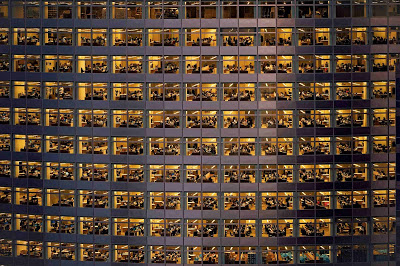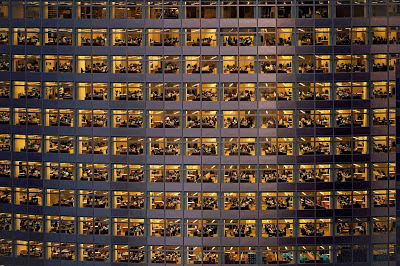by jboullion | Jul 8, 2010 | Uncategorized
From a news release issued by RENEW Wisconsin:
Collectively drawing upon the individual roadblocks that developers experienced in permitting wind energy projects in Wisconsin, a group of renewable energy stakeholders urged the Public Service Commission to adopt standards that can’t be undermined by additional restrictions imposed by local governments.
The comments, submitted on behalf of 38 signatories, addressed the draft siting rule published by the Commission in mid-May. The draft rule proposed standards applicable to all wind energy systems — large and small — erected in Wisconsin. In the next phase of this proceeding, the Commission will review the public comments before issuing a final rule in August.
The rule will specify, among other things, setback distances from neighbors, sound limits, shadow flicker durations, procedures for decommissioning inoperable turbines, and mitigating electronic signal interference.
Noting that local governments would have discretionary authority going beyond the legislation’s intentions, renewable energy supporters recommended specific changes to give developers a greater sense of certainty in the permitting process.
“We are willing to work collaboratively and cooperatively with political subdivisions to establish mutually agreeable provisions beyond the requirements of the rules,” the stakeholders said in their joint comments. “However, we cannot develop wind projects in Wisconsin if current uncertainty regarding political subdivision requirements continues.”
by jboullion | Jul 8, 2010 | Uncategorized
From an article by Danielle Begalke in The Country Today:
TOMAH – The story of how cranberry grower Fred Prehn came to own his first wind turbine begins in an unusual place.
His son, Fritz, a materials science major at UW-Madison, came up with the idea as the pair climbed Mount Aconcagua in South America.
“He said, ‘Dad, why don’t you do something renewable and make a statement?’ ” Prehn recalled.
That statement was made last December when Prehn had a 35-kilowatt Endurance Wind Power wind turbine installed to power his Prehn Cranberry Co. in Tomah.
The source of renewable energy stretches toward the sky on a 140-foot-tall base.
In terms of wind turbines, that’s relatively small, Prehn said. But the turbine has made a big impact.
Prehn said he had reservations about how well the turbine would work at his 160-acre Monroe County farm.
“There’s better wind in other parts of the state, no question about it,” he said.
Still, with average wind speeds of about 12.5 mph at his farm, Prehn estimated the turbine will pump out 100,000 kilowatts of energy per year – enough to run about eight homes annually. The turbine powers his shop and an employee’s home.
According to Ry Thompson, a project manager at Seventh Generation Energy in Madison, which installed the turbine, the Endurance turbine fits well in Wisconsin’s climate.
“We’ve been eager to install one of these,” Thompson said. “It’s a very well-designed, durable machine, and the 30-foot-long blades make it suitable to lower wind speed environments, as are common in Wisconsin.”
Thompson said he expects the turbine to be popular among farmers, schools and manufacturing facilities.
Prehn said he earns 11 cents for every unused kilowatt the turbine produces.
“Right now my electric bill is nothing,” he said. “Oakdale Electric is paying me.”
by jboullion | Jul 8, 2010 | Uncategorized
From a news release issued by RENEW Wisconsin:
Collectively drawing upon the individual roadblocks that developers experienced in permitting wind energy projects in Wisconsin, a group of renewable energy stakeholders urged the Public Service Commission to adopt standards that can’t be undermined by additional restrictions imposed by local governments.
The comments, submitted on behalf of 38 signatories, addressed the draft siting rule published by the Commission in mid-May. The draft rule proposed standards applicable to all wind energy systems — large and small — erected in Wisconsin. In the next phase of this proceeding, the Commission will review the public comments before issuing a final rule in August.
The rule will specify, among other things, setback distances from neighbors, sound limits, shadow flicker durations, procedures for decommissioning inoperable turbines, and mitigating electronic signal interference.
Noting that local governments would have discretionary authority going beyond the legislation’s intentions, renewable energy supporters recommended specific changes to give developers a greater sense of certainty in the permitting process.
“We are willing to work collaboratively and cooperatively with political subdivisions to establish mutually agreeable provisions beyond the requirements of the rules,” the stakeholders said in their joint comments. “However, we cannot develop wind projects in Wisconsin if current uncertainty regarding political subdivision requirements continues.”
by jboullion | Jul 8, 2010 | Uncategorized
IMMEDIATE RELEASE
July 7, 2010
MORE INFORMATION
Michael Vickerman
RENEW Wisconsin
608.255.4044
mvickerman@renewwisconsin.org
Stakeholders Cite Uniformity as Key to Wind Siting Success
Collectively drawing upon the individual roadblocks that developers experienced in permitting wind energy projects in Wisconsin, a group of renewable energy stakeholders urged the Public Service Commission to adopt standards that can’t be undermined by additional restrictions imposed by local governments.
The comments, submitted on behalf of 38 signatories, addressed the draft siting rule published by the Commission in mid-May. The draft rule proposed standards applicable to all wind energy systems — large and small — erected in Wisconsin. In the next phase of this proceeding, the Commission will review the public comments before issuing a final rule in August.
The rule will specify, among other things, setback distances from neighbors, sound limits, shadow flicker durations, procedures for decommissioning inoperable turbines, and mitigating electronic signal interference.
Noting that local governments would have discretionary authority going beyond the legislation’s intentions, renewable energy supporters recommended specific changes to give developers a greater sense of certainty in the permitting process.
“We are willing to work collaboratively and cooperatively with political subdivisions to establish mutually agreeable provisions beyond the requirements of the rules,” the stakeholders said in their joint comments. “However, we cannot develop wind projects in Wisconsin if current uncertainty regarding political subdivision requirements continues.”
“Many worthy projects have been stalled by changes made to ordinances after the project application was filed,” said Michael Vickerman, Executive Director of RENEW Wisconsin, a
renewable energy advocacy organization and a signatory to the joint comments. “We have to ensure that the rules don’t create opportunities for new restrictions that could bring wind energy development to a standstill.”
One example of such a restriction would be a requirement on developers to guarantee property values in the project area, Vickerman said. “Those kinds of conditions have nothing to do with protecting public health and safety, but would certainly increase wind development costs. Their real purpose would be to make wind energy an economic non-starter in whichever community that adopts those requirements.”
The comments submitted on behalf of renewable energy stakeholders can be retrieved at this link — http://psc.wi.gov/apps35/ERF_view/viewdoc.aspx?docid=134452
END
RENEW Wisconsin (http://www.renewwisconsin.org/) is an independent, nonprofit 501(c)(3) organization that acts as a catalyst to advance a sustainable energy future through public policy and private sector initiatives.

by jboullion | Jul 7, 2010 | Uncategorized
As daylight fades, Manhattan continues to gorge on power. New York City is tied to fuels like natural gas, with less than one percent of its electricity coming from wind or solar.
From an article by Joel Achenbach in National Geographic, with photos by Joe McNally
Can we fix the infrastructure that powers our lives?
We are creatures of the grid. We are embedded in it and empowered by it. The sun used to govern our lives, but now, thanks to the grid, darkness falls at our convenience. During the Depression, when power lines first electrified rural America, a farmer in Tennessee rose in church one Sunday and said—power companies love this story—”The greatest thing on earth is to have the love of God in your heart, and the next greatest thing is to have electricity in your house.” He was talking about a few lightbulbs and maybe a radio. He had no idea.
Juice from the grid now penetrates every corner of our lives, and we pay no more attention to it than to the oxygen in the air. Until something goes wrong, that is, and we’re suddenly in the dark, fumbling for flashlights and candles, worrying about the frozen food in what used to be called (in pre-grid days) the icebox. Or until the batteries run dry in our laptops or smart phones, and we find ourselves scouring the dusty corners of airports for an outlet, desperate for the magical power of electrons.
The grid is wondrous. And yet—in part because we’ve paid so little attention to it, engineers tell us—it’s not the grid we need for the 21st century. It’s too old. It’s reliable but not reliable enough, especially in the United States, especially for our mushrooming population of finicky digital devices. Blackouts, brownouts, and other power outs cost Americans an estimated $80 billion a year. And at the same time that it needs to become more reliable, the grid needs dramatic upgrading to handle a different kind of power, a greener kind. That means, among other things, more transmission lines to carry wind power and solar power from remote places to big cities.
Most important, the grid must get smarter. . . .

by jboullion | Jul 7, 2010 | Uncategorized
As daylight fades, Manhattan continues to gorge on power. New York City is tied to fuels like natural gas, with less than one percent of its electricity coming from wind or solar.
From an article by Joel Achenbach in National Geographic, with photos by Joe McNally
Can we fix the infrastructure that powers our lives?
We are creatures of the grid. We are embedded in it and empowered by it. The sun used to govern our lives, but now, thanks to the grid, darkness falls at our convenience. During the Depression, when power lines first electrified rural America, a farmer in Tennessee rose in church one Sunday and said—power companies love this story—”The greatest thing on earth is to have the love of God in your heart, and the next greatest thing is to have electricity in your house.” He was talking about a few lightbulbs and maybe a radio. He had no idea.
Juice from the grid now penetrates every corner of our lives, and we pay no more attention to it than to the oxygen in the air. Until something goes wrong, that is, and we’re suddenly in the dark, fumbling for flashlights and candles, worrying about the frozen food in what used to be called (in pre-grid days) the icebox. Or until the batteries run dry in our laptops or smart phones, and we find ourselves scouring the dusty corners of airports for an outlet, desperate for the magical power of electrons.
The grid is wondrous. And yet—in part because we’ve paid so little attention to it, engineers tell us—it’s not the grid we need for the 21st century. It’s too old. It’s reliable but not reliable enough, especially in the United States, especially for our mushrooming population of finicky digital devices. Blackouts, brownouts, and other power outs cost Americans an estimated $80 billion a year. And at the same time that it needs to become more reliable, the grid needs dramatic upgrading to handle a different kind of power, a greener kind. That means, among other things, more transmission lines to carry wind power and solar power from remote places to big cities.
Most important, the grid must get smarter. . . .


